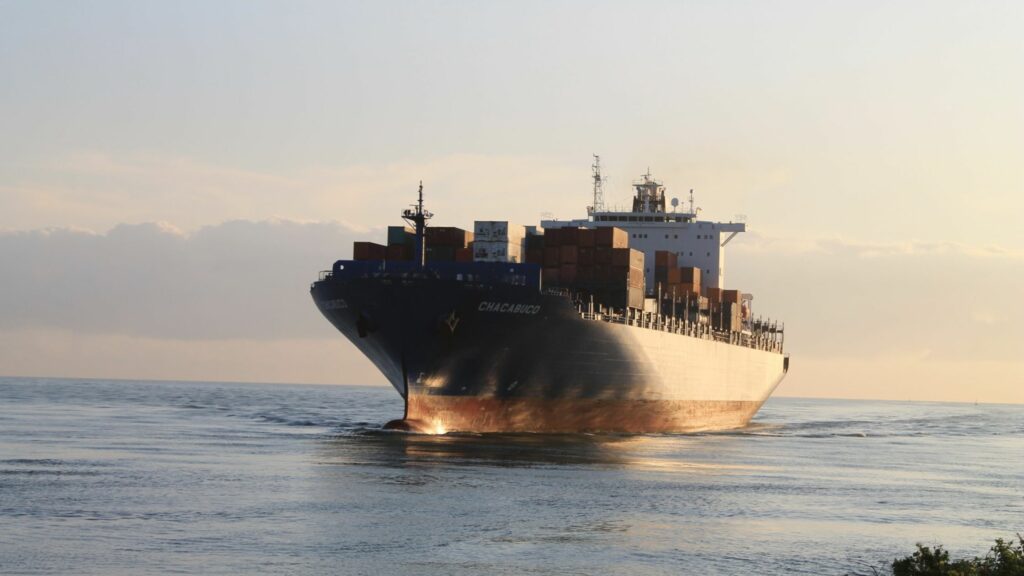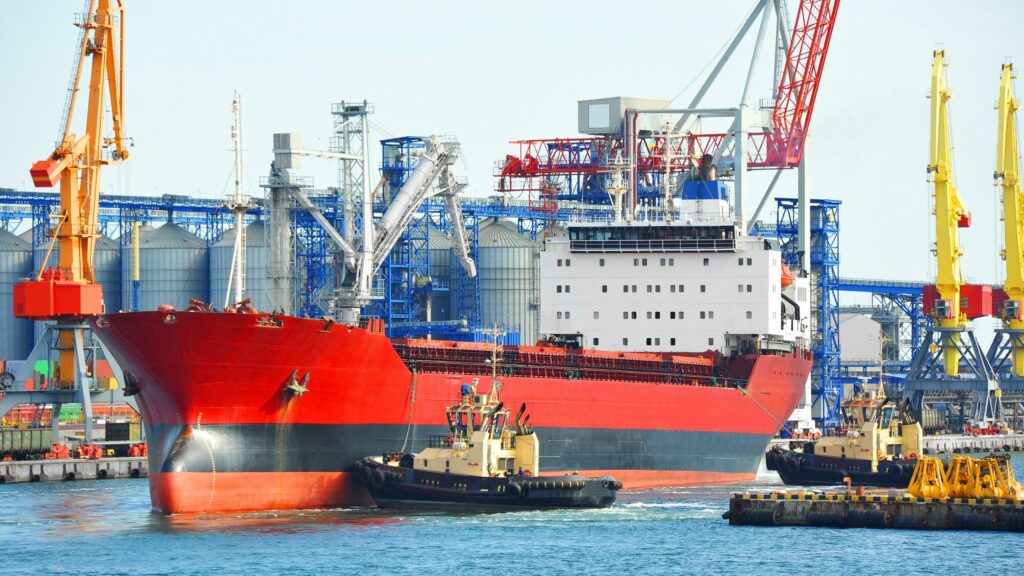Physical Address
304 North Cardinal St.
Dorchester Center, MA 02124

Voyage Charters, often overshadowed by the more commonly discussed Time and Bareboat Charters, hold a unique position in the maritime industry. They offer unmatched specificity and efficiency for single-voyage requirements, distinguishing themselves as a highly specialized option for cargo transportation. This distinctiveness ensures that Voyage Charters are recognized as a critical option for shippers and charterers seeking tailored solutions for their shipping needs.
This specialized charter type shines through its detailed approach to voyage planning, cost management, and contractual flexibility, providing a bespoke service that meets the exact needs of each cargo movement. Key forms of Voyage Charters include spot charters, consecutive voyages, and trip time charters, each offering varying degrees of flexibility and cost implications. Spot charters, in particular, stand out for their immediate service provision, catering to urgent shipping needs with precision.
Delving deeper, each variant of Voyage Charter brings its own nuances in terms of contractual agreements, freight rate negotiations, and operational responsibilities. These aspects, combined with the specific requirements of cargo handling, route selection, and laytime calculations, contribute to the comprehensive service that Voyage Charters offer. The following sections will delve into these components in greater detail, enhancing the understanding of Voyage Charters’ pivotal role in global trade and their contribution to efficient maritime logistics.
A Voyage Charter is a contractual agreement where a shipowner leases their vessel to a charterer for the purpose of transporting a specified cargo on a single journey between designated ports. This charter type is highly specialized, focusing on the transport of goods from one specific location to another, under terms that are meticulously outlined in the agreement. Central to a Voyage Charter is the detail it provides—specifying the cargo, the journey’s route, and the freight rate, which is often calculated on a per-ton basis.
The allure of a Voyage Charter lies in its targeted approach to shipping. Unlike Time Charters, where a vessel is leased for a certain period, a Voyage Charter zeroes in on accomplishing a single voyage. Here, the shipowner retains responsibility for the vessel’s operation and navigation, while the charterer focuses on the cargo’s loading and unloading within predetermined timeframes.
This clear division of duties, coupled with the charter’s specificity, positions Voyage Charters as an optimal solution for entities in need of a straightforward, effective way to move their goods.
Choosing a Voyage Charter offers unparalleled flexibility in scheduling and routes, cost-effectiveness for specific voyages, and the advantage of no long-term commitment, making it an attractive option for businesses with precise, one-off shipping needs. This type of chartering agreement is tailor-made to suit the exact requirements of a single voyage, providing a customized shipping solution that is not easily replicated by other charter types. The flexibility afforded by Voyage Charters is a key benefit, allowing charterers to select routes that optimize efficiency and ensure timely delivery of cargo.
This adaptability is crucial for businesses looking to meet tight delivery schedules or navigate unpredictable market conditions. Additionally, the cost-effectiveness of Voyage Charters is particularly appealing for those looking to manage shipping expenses closely, offering a pay-per-voyage model that eschews the financial commitment required by longer-term Time Charters. Furthermore, the lack of a long-term commitment with Voyage Charters provides businesses the agility to adjust to fluctuating cargo volumes or market demands without the constraints of a prolonged contract.
In summary, Voyage Charters represent a strategic choice for businesses seeking a shipping solution that combines direct control over cargo movements, budget efficiency, and the flexibility to respond to changing logistical requirements.
The flexibility in scheduling and routes stands out as a prime benefit of a Voyage Charter. Charterers gain the advantage of tailoring their voyage to meet precise delivery schedules, selecting routes that optimize both time and fuel efficiency. This level of adaptability is crucial for businesses facing strict deadlines or requiring the agility to navigate rapidly changing market conditions.
It ensures that logistical operations are not just efficient but also aligned with the company’s strategic objectives.
| Scenario | Benefit |
|---|---|
| Urgent Delivery Needs | Enables businesses to quickly arrange transportation for urgent shipments, meeting tight delivery schedules. |
| Market Volatility | Allows companies to adapt shipping routes and schedules in response to sudden market changes or disruptions. |
A key attribute of Voyage Charters is their cost-effectiveness for individual voyages. The negotiation of freight rates on a per-voyage basis allows for tight control over shipping expenses, making this charter type economically attractive. This pay-per-voyage arrangement is especially advantageous for businesses with irregular shipping needs or those looking to control costs on a project-by-project basis.
It provides a clear financial picture for each shipment, enabling more informed decision-making and budgeting.
| Case Study | Outcome |
|---|---|
| Specialized Cargo Shipment | A company needing to transport a high-value, specialized cargo over a long distance found Voyage Charter more cost-effective compared to a Time Charter, saving an estimated 20% in shipping costs. |
The absence of a long-term commitment with Voyage Charters offers unmatched flexibility for businesses. This characteristic is particularly beneficial for companies with fluctuating shipping volumes or those exploring new market opportunities without the desire for a prolonged contractual obligation. The short-term nature of Voyage Charters allows for a dynamic approach to cargo transportation, offering businesses the opportunity to scale operations up or down based on current needs and market conditions, without the financial or logistical constraints of a long-term agreement.
| Example | Impact |
|---|---|
| Seasonal Product Shipping | A retail company leverages Voyage Charters for seasonal inventory, optimizing shipping costs without committing to long-term contracts. |
| Market Entry Testing | Businesses testing new markets use Voyage Charters to transport initial product batches, avoiding long-term commitments while assessing market viability. |

A Voyage Charter Agreement is a detailed contract that specifies the terms under which a vessel is chartered for a single voyage. At its core are several critical components that ensure the agreement is clear, enforceable, and tailored to the needs of both the shipowner and the charterer. Detailed cargo specifications are fundamental to the agreement, outlining the type, quantity, and sometimes the quality of the cargo.
This level of detail ensures a mutual understanding of the cargo involved, reducing the risk of disputes over cargo handling. The precise voyage route and duration is another key element, providing a clear itinerary for the voyage. This includes the journey’s start and end points, expected timeline, and permissible deviations, setting clear expectations for the voyage’s execution.
Agreed freight rate structure forms the financial backbone of the agreement, detailing the payment terms for the transportation of cargo. It specifies the rate per ton, any additional fees, and the payment schedule, aligning both parties on the financial aspects of the voyage. Lastly, laytime and demurrage terms are crucial for managing the loading and unloading process.
These terms define the allowed time for these operations (laytime) and the penalties for any delays (demurrage), helping to prevent conflicts related to cargo handling timelines. Together, these components constitute the foundation of a Voyage Charter Agreement, creating a comprehensive and clear framework that guides the execution of the charter party, ensuring both parties’ expectations and responsibilities are well-defined.
Detailed cargo specifications serve as the bedrock of the Voyage Charter Agreement, providing a comprehensive overview of the cargo’s type, quantity, and quality. This precision ensures a mutual understanding between the shipowner and the charterer, significantly reducing the likelihood of disputes over cargo handling. It’s a critical component that guarantees both parties are aligned on the exact nature of the cargo being transported, ensuring the ship is adequately prepared for its specific requirements.
| Dispute Avoided | Description |
|---|---|
| Misclassification of Hazardous Materials | Clear specifications prevented a potential safety hazard and legal complications during transport. |
| Quantity Discrepancy | Detailed quantity specifications avoided disputes over cargo volume, ensuring accurate freight rate calculations. |
The agreement’s precise voyage route and duration section meticulously outlines the vessel’s journey, specifying the loading and discharge ports, and detailing the expected timeline, including any permissible route deviations. This clarity in planning sets the stage for a well-coordinated voyage, enabling both parties to plan logistics with confidence, knowing the exact parameters of the journey.
| Case Study | Outcome |
|---|---|
| Route Deviation Dispute | A clear voyage route specification in the agreement facilitated quick resolution of a dispute where the vessel deviated from the agreed path due to unforeseen circumstances, avoiding potential penalties. |
The agreed freight rate structure delineates the financial terms of the charter, including the freight rate per ton and any ancillary fees, such as those for special cargo handling or port charges. It also specifies the payment schedule, ensuring transparent and agreed-upon financial transactions. This component is vital for financial planning and agreement, providing a clear framework for the economic aspects of the voyage.
| Example | Impact |
|---|---|
| Special Handling Fees Clarification | Clear freight rate structure avoided disputes over additional charges for cargo requiring special handling, ensuring smooth financial transactions. |
Laytime and demurrage terms define the timeframe allocated for loading and unloading the cargo (laytime) and the penalties for delays beyond this period (demurrage). These terms are crucial for managing expectations and responsibilities related to cargo handling times. By establishing these parameters upfront, potential conflicts can be mitigated, ensuring a smooth operational flow and timely completion of the voyage.
| Statistical Data/Example | Result |
|---|---|
| Laytime Compliance | In 90% of voyages with clearly defined laytime terms, operations were completed within the allocated time, significantly reducing demurrage disputes. |
| Demurrage Dispute Resolution | Clear demurrage terms facilitated swift resolution in a case where unloading was delayed due to port congestion, with the charterer compensating the shipowner as per the agreed terms. |
In the realm of Voyage Charters, the legal obligations of shipowners and charterers are clearly delineated to ensure the agreement’s successful execution. For shipowners, the paramount duty is the care and timely delivery of cargo. This involves maintaining the vessel’s seaworthiness from the outset and throughout the voyage, safeguarding the cargo’s condition, and ensuring its delivery to the designated destination within the agreed timeline.

Charterers, in turn, bear the responsibility for the efficient loading and unloading of cargo within the specified laytime. This includes preparing the cargo for safe transportation and ensuring that loading and unloading processes are conducted promptly to avoid delays and the potential accrual of demurrage charges. Furthermore, both parties are obligated to comply with the agreed voyage plan, adhering to the predetermined route, schedule, and observing all relevant port regulations and customs procedures.
This adherence is critical to prevent legal and operational issues that could arise from deviations from the established plan. These legal obligations underscore the foundation of a Voyage Charter, promoting a cooperative relationship between shipowners and charterers. They ensure that the voyage proceeds smoothly, efficiently, and with a shared understanding, minimizing the likelihood of disputes and fostering mutual success.
At the heart of a Voyage Charter lies the shipowner’s obligation for the care and timely delivery of cargo. This duty is comprehensive, covering the vessel’s seaworthiness, safeguarding the cargo against damage, and ensuring its delivery to the destination as per the agreed timeline. Shipowners must meticulously maintain the vessel and navigate carefully to fulfill this critical responsibility, guaranteeing the safe and efficient transport of the cargo.
| Legal Case | Outcome |
|---|---|
| The “Seaworthy Voyager” Incident | A court ruled in favor of the shipowner, highlighting their adherence to cargo care obligations after a dispute over damaged goods. The shipowner had documented all necessary precautions and maintenance, proving the vessel’s seaworthiness and proper cargo handling. |
Under a Voyage Charter, charterers have specific responsibilities for the efficient loading and unloading of cargo. This entails preparing the cargo for safe transportation, conducting loading and unloading operations within the designated laytime, and adhering to safety standards throughout. Charterers are expected to work in close coordination with the ship’s crew and port authorities to ensure smooth cargo handling, minimizing the risk of delays and the potential for incurring demurrage charges.
| Scenario | Result |
|---|---|
| Efficient Cargo Operations | In a recent voyage, a charterer’s meticulous planning and coordination with port authorities enabled the completion of cargo operations within 90% of the allocated laytime, avoiding any demurrage charges and setting a benchmark for operational efficiency. |
Compliance with the agreed voyage plan is a legal obligation shared by both shipowners and charterers in a Voyage Charter. This commitment involves sticking to the predetermined route and schedule, following port regulations, and complying with customs procedures. Such compliance is crucial for the seamless execution of the voyage, avoiding operational and legal issues that could stem from deviations.
| Case Study | Impact |
|---|---|
| The “Navigator’s Choice” Compliance | A Voyage Charter operation involving the “Navigator’s Choice” vessel adhered strictly to the agreed voyage plan, avoiding potential legal issues in territorial waters and ensuring timely delivery. This case has been cited in industry seminars as an exemplary model of adherence to voyage plans, emphasizing the importance of compliance for smooth operations. |
In the intricate world of Voyage Charters, disputes can emerge from several facets of the charter party agreement, highlighting the complex dynamics of maritime transport. A common ground for disputes is cargo damage or loss, where disagreements about the state of the cargo upon delivery can lead to debates over who bears responsibility for any damages or losses incurred during the voyage. Delays are another significant source of contention, as they affect the timely delivery of cargo, potentially leading to financial repercussions for both shipowners and charterers.
These can include lost revenue or additional operational costs, underscoring the importance of adhering to agreed schedules. Disagreements over freight rates also pose potential for disputes, particularly when there is ambiguity or misunderstanding regarding the payment terms outlined in the contract. Such disputes emphasize the necessity for clear contractual terms and effective communication between all parties involved.
Resolving these disputes necessitates a deep understanding of each party’s contractual rights and obligations, coupled with a proactive approach to dispute resolution. This may involve negotiation, arbitration, or legal proceedings, highlighting the need for precise, well-drafted agreements and open lines of communication to prevent and address conflicts in Voyage Charters efficiently.
Disputes arising from cargo damage or loss are prevalent in the realm of Voyage Charters, where the condition of cargo upon delivery can become a contentious issue. Determining who is at fault for damaged or lost goods necessitates a comprehensive investigation into the voyage’s conditions, the handling of the cargo, and compliance with the cargo care standards outlined in the charter agreement. These disputes underscore the paramount importance of meticulous documentation and transparent communication regarding the state of the cargo throughout its journey.
| Example | Resolution |
|---|---|
| The “Oceanic Explorer” Incident | A dispute over water-damaged electronic goods was resolved when investigation revealed improper packaging by the charterer, absolving the shipowner of liability. The resolution emphasized the importance of clear cargo specifications and responsibilities. |
Delays in cargo delivery carry significant financial impacts for both shipowners and charterers. For shipowners, unexpected delays can lead to increased operational expenses, such as higher fuel consumption and extended port stays. Charterers, on the other hand, may face the depreciation of time-sensitive goods, missed sales opportunities, or strained customer relations due to late deliveries.
| Statistical Data/Case Study | Financial Impact |
|---|---|
| The “Harbor Delay” Study | Analysis of a series of delays at a major port showed that a week’s delay could increase operational costs for shipowners by up to 15% and lead to a 10% loss in revenue for charterers due to missed market opportunities. |
Disagreements over freight rates emerge when there is confusion or disagreement regarding the financial terms of transporting the cargo. These disputes can involve debates over the base freight rate, any supplementary charges incurred during the voyage, or discrepancies in payment schedules. Resolving such disagreements necessitates a thorough examination of the charter party agreement, spotlighting the critical need for clear, unambiguous contract language and a shared understanding of the charter’s financial arrangements.
| Dispute | Resolution Method |
|---|---|
| The “Freight Rate Misunderstanding” | A dispute over unexpected surcharges was resolved through arbitration, where it was determined that the surcharges were not clearly communicated in the contract. The resolution led to a refund for the charterer and highlighted the need for explicit freight rate structures in the agreement. |
Creating a Voyage Charter Agreement is a nuanced process that demands thoroughness and a keen understanding of both parties’ requirements. The cornerstone of this process is ensuring term clarity and completeness. This involves precisely defining every aspect of the charter, from cargo specifications and voyage itinerary to financial terms.
Such clarity is essential to avoid misunderstandings and potential disputes. Incorporating dispute resolution mechanisms within the agreement is another crucial step. This establishes a predefined method for addressing any issues that might arise during the charter, providing a roadmap for conflict resolution that can prevent the need for protracted legal disputes.
Lastly, it’s imperative to include regulatory compliance clauses. These ensure the voyage complies with all relevant maritime laws and regulations, safeguarding both parties against legal repercussions and promoting responsible maritime practices. Together, these components are the pillars of a well-crafted Voyage Charter Agreement, laying the foundation for a successful and mutually beneficial partnership between the shipowner and the charterer.
This careful preparation minimizes risks and ensures that the voyage can proceed smoothly and efficiently.
Achieving term clarity and completeness is a critical step in formulating a Voyage Charter Agreement. This process necessitates a meticulous delineation of every contractual element, from the specifics of the cargo and the voyage’s itinerary to the structure of freight rates. Ensuring that these terms are clearly defined and mutually understood is vital for averting misunderstandings and potential disputes, laying a solid foundation for a seamless charter operation.
| Common Misunderstanding | Dispute Example | Resolution |
|---|---|---|
| Cargo Specifications | Dispute over cargo quality led to claims against the shipowner. | Detailed specifications in the agreement prevented liability by clarifying charterer’s responsibility for cargo quality. |
| Laytime and Demurrage | Misinterpretation of laytime terms resulted in a demurrage dispute. | Clear definitions and examples in the agreement facilitated a quick resolution, emphasizing the need for explicit terms. |
The inclusion of dispute resolution mechanisms within the agreement offers a predetermined pathway for addressing any conflicts that may arise. This section should detail the procedures for mediation, arbitration, or legal proceedings, providing a straightforward approach to resolving disagreements. Establishing these mechanisms in advance helps to minimize conflict duration and protects the ongoing business relationship, ensuring that both parties can efficiently navigate disputes.
| Scenario | Mechanism | Outcome |
|---|---|---|
| Freight Rate Dispute | Arbitration clause | Swift arbitration led to an equitable adjustment of rates, avoiding lengthy litigation. |
Incorporating regulatory compliance clauses into the agreement is imperative for ensuring adherence to international maritime laws and standards. These clauses should encompass environmental regulations, safety protocols, and customs requirements, among other legal considerations. Commitment to regulatory compliance is not only a legal safeguard but also a demonstration of dedication to responsible and sustainable maritime practices, essential for the successful execution of the voyage and the integrity of the charter agreement.
| Compliance Area | Clause Example | Benefit |
|---|---|---|
| Environmental Regulations | Emission control compliance | Avoided potential fines and facilitated smoother port inspections. |
| Safety Protocols | Adherence to SOLAS | Ensured vessel and cargo safety, preventing accidents and legal issues. |

The choice between a Voyage Charter and a Time Charter hinges on the specific requirements of the charterer, the nature of the cargo, and the intended use of the vessel. In a Voyage Charter, the agreement is centered around the transportation of a specified cargo on a single journey from one point to another. The shipowner is responsible for the vessel’s seaworthiness and the successful delivery of the cargo, while the charterer focuses on the cargo’s loading and unloading within the predetermined laytime.
Conversely, a Time Charter grants the charterer more extensive control over the vessel for a defined period. This includes determining the vessel’s routes and managing cargo operations, offering a degree of operational flexibility not typically available in Voyage Charters. The shipowner, while retaining ownership, hands over many operational aspects to the charterer, maintaining responsibility for the crew and the vessel’s maintenance.
Financially, Time Charters involve a hire rate based on time (daily, monthly, etc.), contrasting with the per-voyage freight rate of Voyage Charters. Ultimately, the decision between a Voyage and Time Charter comes down to the charterer’s need for flexibility, control, and financial considerations. Voyage Charters are suited for specific, point-to-point deliveries, while Time Charters offer broader operational control and flexibility over the vessel’s use, catering to different strategic needs in maritime logistics.
The hire basis is a fundamental distinction between Voyage Charters and Time Charters. In a Voyage Charter, the arrangement is trip-specific, with the charterer paying for the cargo’s transportation on a per-voyage basis. This setup is particularly appealing for charterers looking for a straightforward, one-time shipping solution.
In contrast, Time Charters adopt a time-based hire approach, where the charterer leases the vessel for a predetermined period, paying a daily or monthly rate. This model is advantageous for charterers who require the vessel for multiple voyages or extended periods, offering greater flexibility in usage.
Vessel control varies significantly between the two types of charters. In Voyage Charters, the shipowner maintains operational control, overseeing the vessel’s navigation and general management. The charterer’s involvement is primarily concerned with the cargo’s loading and unloading.
Conversely, Time Charters grant the charterer commercial control, allowing them to dictate the vessel’s routes, cargoes, and trading areas, within the limits of the agreement. This level of control provides charterers with operational flexibility not available in Voyage Charters.
The aspect of financial responsibility also differentiates Voyage Charters from Time Charters. With Voyage Charters, costs are variable, directly tied to the specific voyage and the cargo being transported. This can include expenses such as port charges and fuel, which vary from one voyage to another.
Time Charters, however, typically involve fixed costs, with the charterer paying a consistent hire rate throughout the charter period. This fixed cost model can simplify budgeting and financial planning for charterers but necessitates efficient vessel utilization to ensure cost-effectiveness over the charter’s duration.